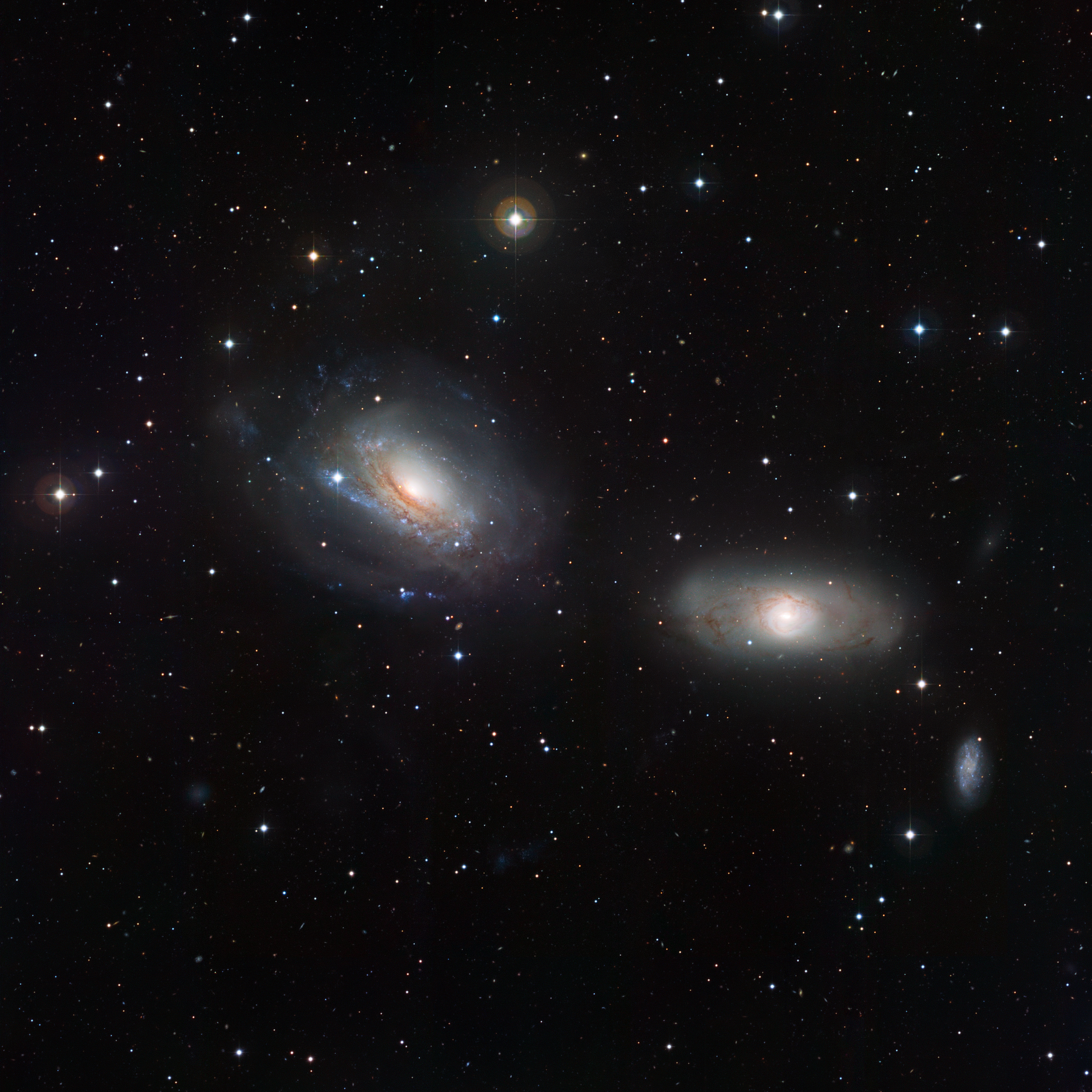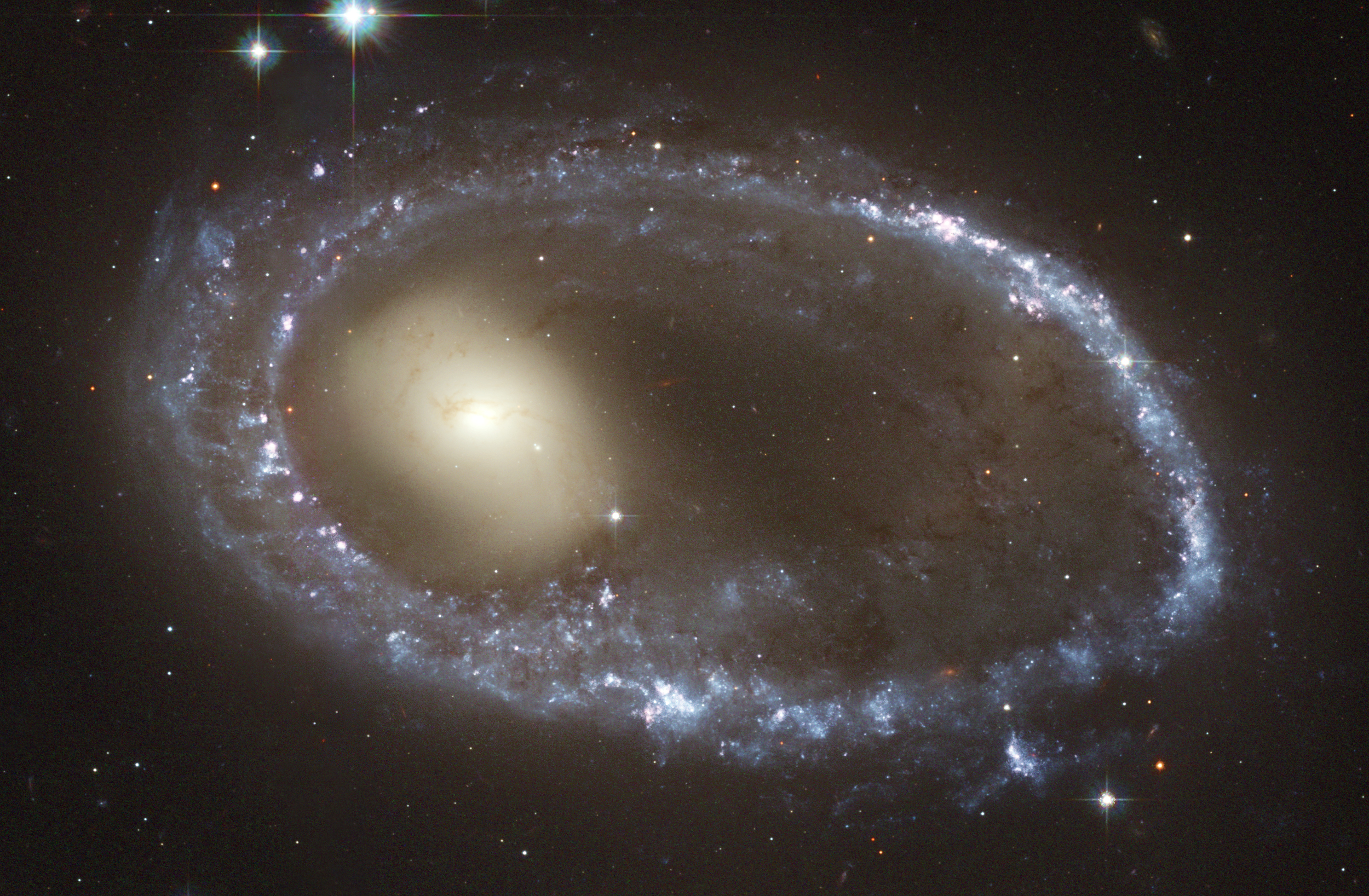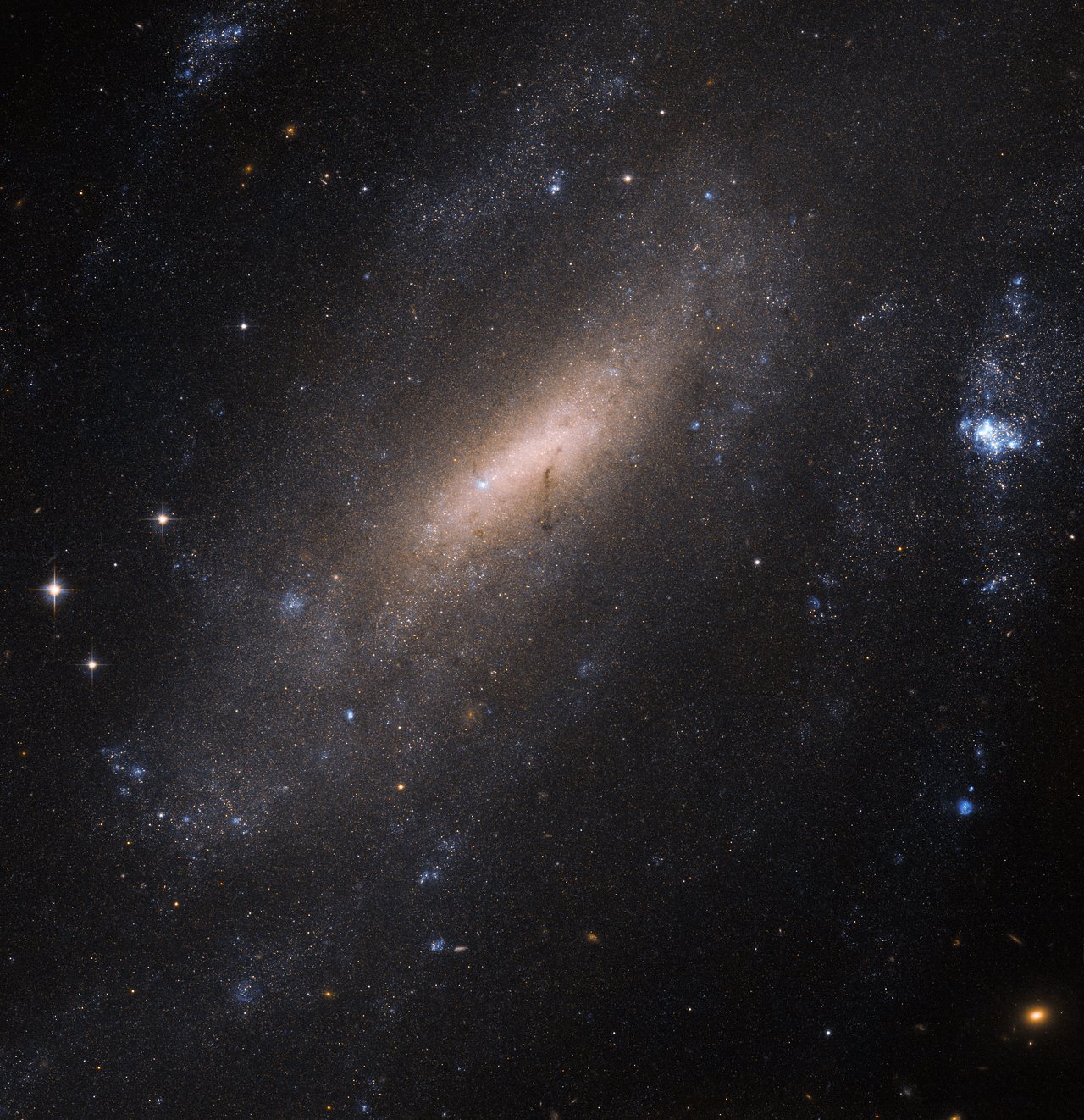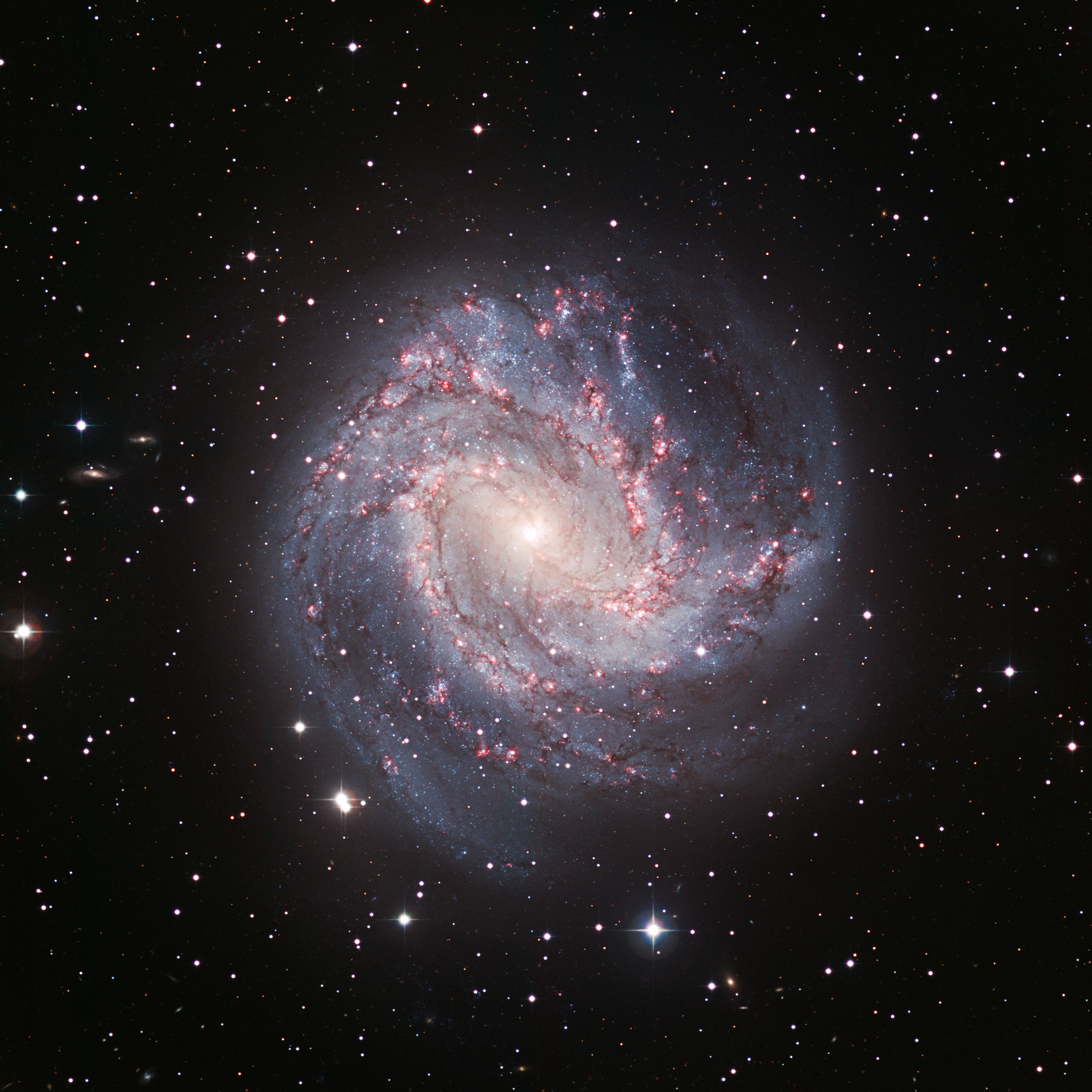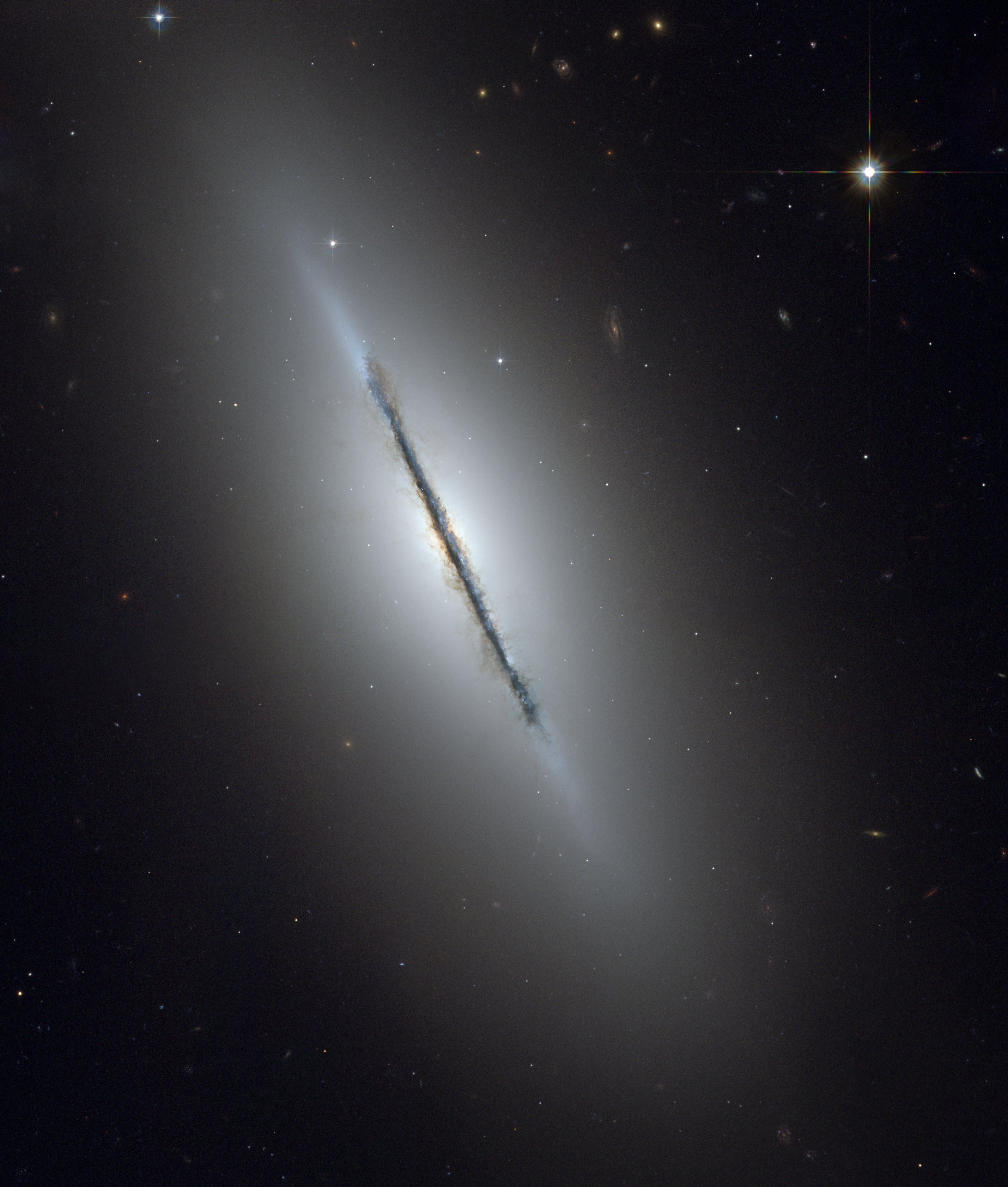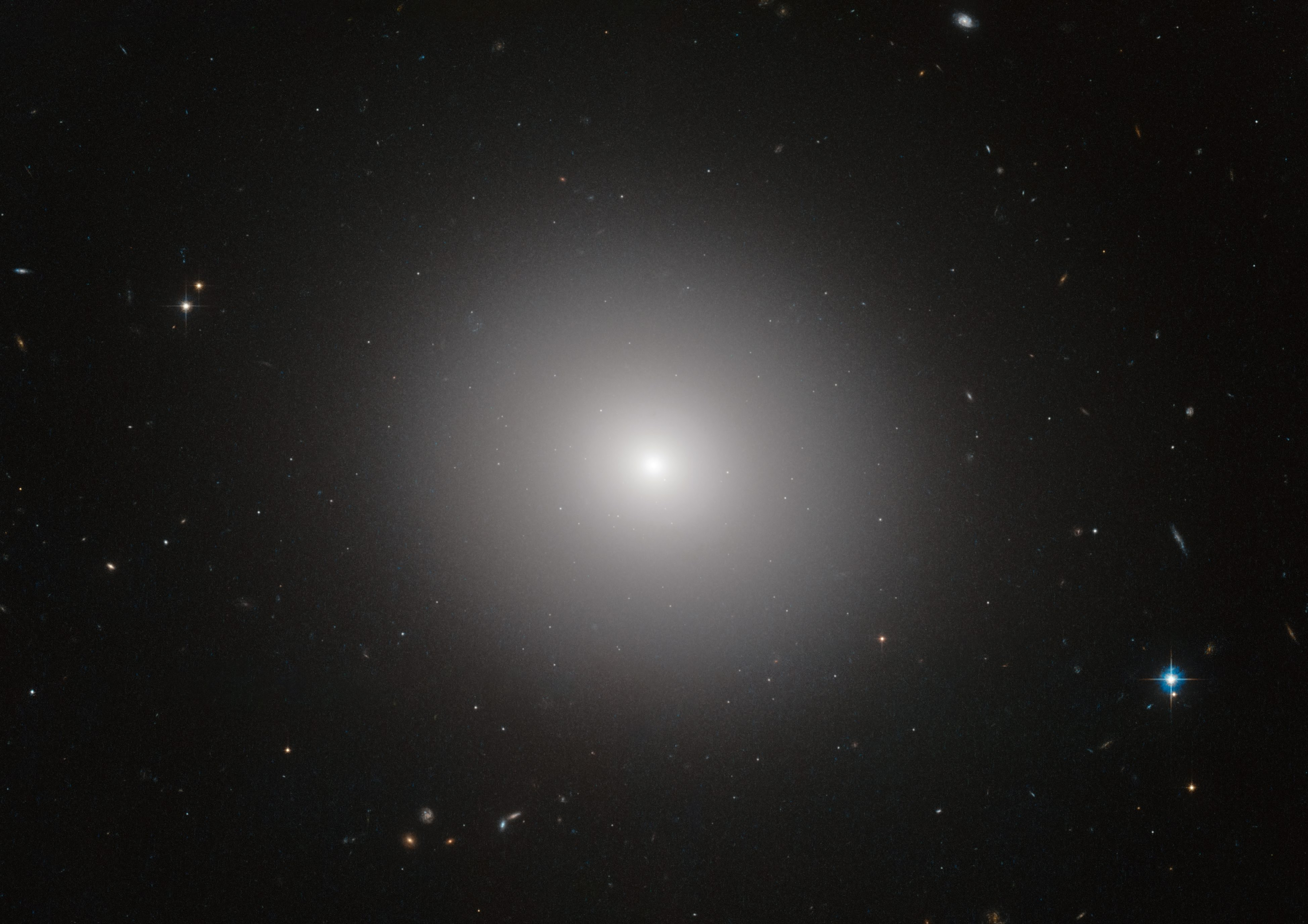|
Disc Galaxy
A disc galaxy (or disk galaxy) is a galaxy characterized by a galactic disc. This is a flattened circular volume of stars that are mainly orbiting the galactic core in the same plane. These galaxies may or may not include a central non-disc-like region (a galactic bulge). They will typically have an orbiting mass of gas and dust in the same plane as the stars. Interacting galaxy, Interactions with other nearby galaxies can perturb and stretch the galactic disk. Disc galaxy types include: * Spiral galaxy, Spiral galaxies: ** Unbarred spiral galaxy, Unbarred spiral galaxies: (types S, SA) ** Barred spiral galaxy, Barred spiral galaxies: (type SB) ** Intermediate spiral galaxy, Intermediate spiral galaxies: (type SAB) * Lenticular galaxy, Lenticular galaxies: (types E8, S0, SA0, SB0, SAB0) Galaxies that are not disc types include: * Elliptical galaxy, Elliptical galaxies: (type dE) * Irregular galaxy, Irregular galaxies: (type dI) See also * thick disk * thin disk References [...More Info...] [...Related Items...] OR: [Wikipedia] [Google] [Baidu] |
NGC 253 Galaxy
NGC may refer to: Companies * NGC Corporation, the name of US electric company Dynegy, Inc. from 1995 to 1998 * National Gas Company of Trinidad and Tobago, a state-owned natural gas company in Trinidad and Tobago * National Grid plc, a former name of National Grid Electricity Transmission plc, the operator of the British electricity transmission system * Northrop Grumman Corporation, an aerospace and defense conglomerate formed from the merger of Northrop Corporation and Grumman Corporation in 1994 * Numismatic Guaranty Company, a coin certification company in the United States * National Garden Clubs, headquartered in St. Louis, Missouri * Network General Corporation, a defunct networking hardware company Other uses * National Gallery of Canada, an art gallery founded in 1880 in Ottawa, Canada * National Games of China, the national multi-sport event of China * National Geographic (American TV channel), a documentary and reality television channel established in the United Sta ... [...More Info...] [...Related Items...] OR: [Wikipedia] [Google] [Baidu] |
Galaxy
A galaxy is a Physical system, system of stars, stellar remnants, interstellar medium, interstellar gas, cosmic dust, dust, and dark matter bound together by gravity. The word is derived from the Ancient Greek, Greek ' (), literally 'milky', a reference to the Milky Way galaxy that contains the Solar System. Galaxies, averaging an estimated 100 million stars, range in size from dwarf galaxy, dwarfs with less than a thousand stars, to the List of largest galaxies, largest galaxies known – Type-cD galaxy, supergiants with one hundred 10^12, trillion stars, each orbiting its galaxy's centre of mass. Most of the mass in a typical galaxy is in the form of dark matter, with only a few per cent of that mass visible in the form of stars and nebulae. Supermassive black holes are a common feature at the centres of galaxies. Galaxies are categorised according to their visual morphology (astronomy), morphology as elliptical galaxy, elliptical, Spiral galaxy, spiral, or irregular galaxy ... [...More Info...] [...Related Items...] OR: [Wikipedia] [Google] [Baidu] |
Galactic Disc
A galactic disc (or galactic disk) is a component of disc galaxies, such as spiral galaxies like the Milky Way and lenticular galaxies. Galactic discs consist of a stellar component (composed of most of the galaxy's stars) and a gaseous component (mostly composed of cool gas and dust). The stellar population of galactic discs tend to exhibit very little random motion with most of its stars undergoing nearly circular orbits about the galactic center. Discs can be fairly thin because the disc material's motion lies predominantly on the plane of the disc (very little vertical motion). The Milky Way's disc, for example, is approximately 1 kly thick, but thickness can vary for discs in other galaxies. Stellar component Exponential surface brightness profiles Galactic discs have surface brightness profiles that very closely follow exponential functions in both the radial and vertical directions. Radial profile The surface brightness radial profile of the galactic disc of a t ... [...More Info...] [...Related Items...] OR: [Wikipedia] [Google] [Baidu] |
Star
A star is a luminous spheroid of plasma (physics), plasma held together by Self-gravitation, self-gravity. The List of nearest stars and brown dwarfs, nearest star to Earth is the Sun. Many other stars are visible to the naked eye at night sky, night; their immense distances from Earth make them appear as fixed stars, fixed points of light. The most prominent stars have been categorised into constellations and asterism (astronomy), asterisms, and many of the brightest stars have proper names. Astronomers have assembled star catalogues that identify the known stars and provide standardized stellar designations. The observable universe contains an estimated to stars. Only about 4,000 of these stars are visible to the naked eye—all within the Milky Way galaxy. A star's life star formation, begins with the gravitational collapse of a gaseous nebula of material largely comprising hydrogen, helium, and traces of heavier elements. Its stellar mass, total mass mainly determines it ... [...More Info...] [...Related Items...] OR: [Wikipedia] [Google] [Baidu] |
Galactic Bulge
In astronomy, a galactic bulge (or simply bulge) is a tightly packed group of stars within a larger star formation. The term almost exclusively refers to the group of stars found near the center of most spiral galaxies (see ''galactic spheroid''). Bulges were historically thought to be elliptical galaxies that happened to have a disk of stars around them, but high-resolution images using the Hubble Space Telescope have revealed that many bulges lie at the heart of a spiral galaxy. It is now thought that there are at least two types of bulges: bulges that are like ellipticals and bulges that are like spiral galaxies. Classical bulges Bulges that have properties similar to those of elliptical galaxies are often called "classical bulges" due to their similarity to the historic view of bulges. These bulges are composed primarily of stars that are older, Population II stars, and hence have a reddish hue (see stellar evolution). These stars are also in orbits that are essentiall ... [...More Info...] [...Related Items...] OR: [Wikipedia] [Google] [Baidu] |
Interacting Galaxy
Interacting galaxies (''colliding galaxies'') are galaxy, galaxies whose gravity, gravitational fields result in a disturbance of one another. Major mergers occur between galaxies with similar amounts of mass, whereas minor mergers involve galaxies with masses that vary significantly. An example of a minor interaction is a satellite galaxy disturbing the primary galaxy's spiral arms. An example of a major interaction is a galactic collision, which may lead to a galaxy merger. Satellite interaction A giant galaxy interacting with its satellite galaxy, satellites is common. A satellite's gravity could attract one of the primary's spiral arms. Alternatively, the secondary satellite can dive into the primary galaxy, as in the Sagittarius Dwarf Spheroidal Galaxy, Sagittarius Dwarf Elliptical Galaxy diving into the Milky Way. That can possibly trigger a small amount of star formation. Such orphaned clusters of stars were sometimes referred to as "blue blobs" before they were recognize ... [...More Info...] [...Related Items...] OR: [Wikipedia] [Google] [Baidu] |
Spiral Galaxy
Spiral galaxies form a galaxy morphological classification, class of galaxy originally described by Edwin Hubble in his 1936 work ''The Realm of the Nebulae''Alt URL pp. 124–151) and, as such, form part of the Hubble sequence. Most spiral galaxies consist of a flat, rotating Disc (galaxy), disk containing stars, Interstellar medium, gas and dust, and a central concentration of stars known as the Bulge (astronomy), bulge. These are often surrounded by a much fainter Galactic halo, halo of stars, many of which reside in globular clusters. Spiral galaxies are named by their spiral structures that extend from the center into the galactic disc. The spiral arms are sites of ongoing star formation and are brighter than the surrounding disc because of the young, hot OB stars that inhabit them. Roughly two-thirds of all spirals are ... [...More Info...] [...Related Items...] OR: [Wikipedia] [Google] [Baidu] |
Unbarred Spiral Galaxy
An unbarred spiral galaxyAstronomy Pictures(accessed 18 April 2010) is a type of spiral galaxy without a central bar, or one that is not a barred spiral galaxy. It is designated with an SA in the galaxy morphological classification scheme. A nearby example of an unbarred spiral is the Triangulum Galaxy The Triangulum Galaxy is a spiral galaxy 2.73 million light-years (ly) from Earth in the constellation Triangulum. It is catalogued as Messier 33 or NGC 598. With the D25 isophotal diameter of , the Triangulum Galaxy is the third-largest me .... Barless spiral galaxies are one of three general types of spiral galaxies under the '' de Vaucouleurs system'' classification system, the other two being intermediate spiral galaxy and barred spiral galaxy. Under the ''Hubble tuning fork'', it is one of two general types of spiral galaxy, the other being barred spirals. Grades Unbarred lenticular galaxy An unbarred lenticular galaxy is a lenticular version of an unbar ... [...More Info...] [...Related Items...] OR: [Wikipedia] [Google] [Baidu] |
Barred Spiral Galaxy
A barred spiral galaxy is a spiral galaxy with a central bar-shaped structure composed of stars. Bars are found in about two thirds of all spiral galaxies in the local universe, and generally affect both the motions of stars and interstellar gas within spiral galaxies and can affect spiral arms as well. The Milky Way Galaxy, where the Solar System is located, is classified as a barred spiral galaxy. Edwin Hubble classified spiral galaxies of this type as "SB" (spiral, barred) in his Hubble sequence and arranged them into sub-categories based on how open the arms of the spiral are. SBa types feature tightly bound arms, while SBc types are at the other extreme and have loosely bound arms. SBb-type galaxies lie in between the two. SB0 is a barred lenticular galaxy. A new type, SBm, was subsequently created to describe somewhat Barred irregular galaxy, irregular barred spirals, such as the Magellanic Clouds, which were once classified as irregular galaxies, but have since been found t ... [...More Info...] [...Related Items...] OR: [Wikipedia] [Google] [Baidu] |
Intermediate Spiral Galaxy
An intermediate spiral galaxy is a galaxy that is in between the classifications of a barred spiral galaxy and an unbarred spiral galaxy. It is designated as SAB in the galaxy morphological classification system devised by Gerard de Vaucouleurs. Subtypes are labeled as SAB0, SABa, SABb, or SABc, following a sequence analogous to the Hubble sequence for barred and unbarred spirals. The subtype (0, a, b, or c) is based on the relative prominence of the central bulge and how tightly wound the spiral arms Spiral arms are a defining feature of spiral galaxies. They manifest as spiral-shaped regions of enhanced brightness within the galactic disc. Typically, spiral galaxies exhibit two or more spiral arms. The collective configuration of these arms ... are. Examples References * Galaxy morphological types {{Spiral-galaxy-stub ... [...More Info...] [...Related Items...] OR: [Wikipedia] [Google] [Baidu] |
Lenticular Galaxy
A lenticular galaxy (denoted S0) is a Galaxy morphological classification, type of galaxy intermediate between an elliptical galaxy, elliptical (denoted E) and a spiral galaxy in galaxy morphological classification schemes. It contains a large-scale disc but does not have large-scale spiral arms. Lenticular galaxies are Disc galaxy, disc galaxies that have used up or lost most of their interstellar matter and therefore have very little ongoing star formation. They may, however, retain significant dust in their disks. As a result, they consist mainly of aging stars (like elliptical galaxies). Despite the morphological differences, lenticular and elliptical galaxies share common properties like spectral features and scaling relations. Both can be considered early-type galaxies that are passively evolving, at least in the local part of the Universe. Connecting the E galaxies with the S0 galaxies are the ES galaxies with intermediate-scale discs. Morphology and structure Classific ... [...More Info...] [...Related Items...] OR: [Wikipedia] [Google] [Baidu] |
Elliptical Galaxy
An elliptical galaxy is a type of galaxy with an approximately ellipsoidal shape and a smooth, nearly featureless image. They are one of the three main galaxy morphological classification, classes of galaxy described by Edwin Hubble in his Hubble sequence#Physical significance, Hubble sequence and 1936 work ''The Realm of the Nebulae'', with their intermediate scale disks, a subset of the "early-type" galaxy population. Most elliptical galaxies are composed of older, stellar evolution#Low-mass stars, low-mass stars, with a sparse interstellar medium, and they tend to be surrounded by large numbers of globular clusters. Star formation activity in elliptical galaxies is typically minimal; they may, however, undergo brief periods of star formation when merging with other galaxies. Elliptical galaxies are believed to make up approximately 10–15% of galaxies in the Virgo Supercluster, and they are not the dominant type of galaxy in the universe overall. They are preferentially fou ... [...More Info...] [...Related Items...] OR: [Wikipedia] [Google] [Baidu] |




